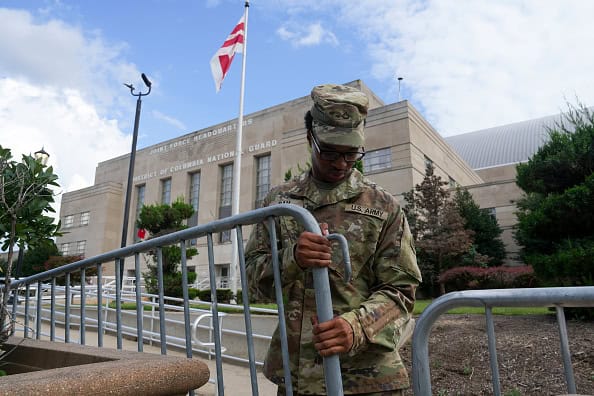
On August 11, President Trump issued an executive order claiming, contrary to data, a “crime emergency” in Washington, D.C. to justify taking temporary control over the D.C. Metropolitan Police Department (MPD).
The president also issued a memorandum to the secretary of defense to mobilize the D.C. National Guard to address the purported “epidemic of crime in our Nation’s capital.”
The Home Rule Act permits the president to temporarily direct the mayor of D.C. to provide MPD services for federal purposes when “special conditions of an emergency nature exist.”
Under this Act, MPD may serve the president until the end of the emergency or 30 days, whichever occurs first. If the president wants to maintain control of MPD for longer than 30 days, the House and Senate must issue a joint resolution authorizing an extension.
Unlike other National Guards controlled by governors, the president has direct control over the D.C. National Guard.
The president claimed National Guard troops and law enforcement officers would be unconstrained and could "do whatever the h-- they want.”
This is false. Constitutional protections, as well as other federal and D.C. laws, continue to protect D.C. residents and constrain the actions of MPD officers and D.C. National Guard troops. Executive orders do not create or amend existing law.
The president claims there is a “crime emergency” in D.C.
This is false. In January 2025, the U.S. Attorney’s Office for the District of Columbia announced that crime in D.C. is at a 30-year low. MPD’s own tracking of 2024 and 2025 crime data shows that, from 2024 to 2025, violent crime decreased by 26%.
The president described youth, people who are unhoused or people who have had contact with the criminal legal system with dehumanizing language such as “violent gangs,” “blood thirsty criminals,” and “drugged out.”
This rhetoric is false and dangerous. The use of such language relies on pernicious stereotypes that grossly mischaracterize large groups of people with differing circumstances, backgrounds, and challenges. All people have inherent dignity, and their humanity must be respected, particularly by political leaders. Dehumanizing language, particularly when used by people in leadership positions, can desensitize the public towards the people who are targeted, normalize hate, and lead to violence against those targeted.
No. An increased show of force from law enforcement, especially when crime rates are falling, will likely increase tensions with D.C. residents and may escalate police-resident encounters. The president’s assertion that troops and officers can “do whatever the h– they want” may encourage troops and officers to feel unconstrained, raising the risk of violence by National Guard troops and MPD officers.
By implementing these dangerous and unwarranted measures to increase the show of force in D.C., the Trump administration ignores and undermines effective and proven approaches to promote public safety in D.C.
For example, research shows that community-based violence intervention (CVI) and prevention programs, when led by community members, decrease violence in both the short and long-term — without replicating the harm caused by law enforcement involvement. Despite their efficacy, in May 2025, the U.S. Department of Justice stopped funding CVI programs, negatively impacting between 10 and 15 community-based organizations providing CVI services in D.C.
This executive order criminalizes homelessness, harm reduction programs, and threatens the safety of unhoused people.
This executive order police power, aggressive law enforcement tactics, and threatens officials who try to promote more equitable law enforcement practices with prosecution.
This framework is a starting point towards real safety that includes alternatives to policing, community based responders, and public investments that provide economic security and address the root causes of violence.
